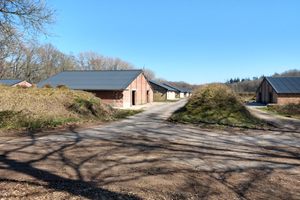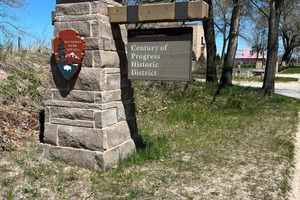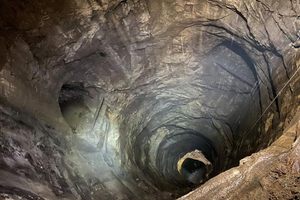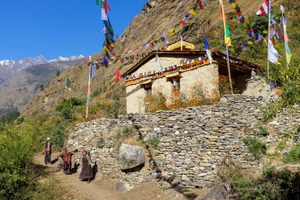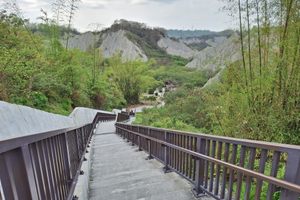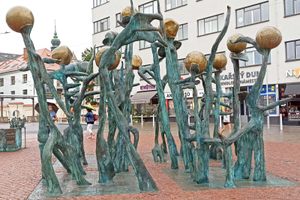https://www.atlasobscura.com/places/punk-monument

Forming an alternative music band in totalitarian communist Czechoslovakia was no easy task, as the case of The Plastic People of the Universe—which faced persecution and imprisonment—illustrates. Their struggles inspired the founding of Charta 77, an organization that criticized human rights violations in Czechoslovakia and later contributed to the Velvet Revolution of 1989, led by Václav Havel, a former political prisoner who became a democratic president.
The threat of prison made some underground bands look for ways to be successful and authentic without becoming victims of the regime. For example, several students of the Faculty of Civil Engineering of the Czech Technical University in Prague spread rumors about the existence of a great punk band called Visací zámek until, in 1982, they were finally forced to found it.
Some of their early songs were ambiguous enough to function as a call to rebellion but still be defensible if challenged. This may have helped them gain the patronage of an official organization, the Prague Gardeners, which had nothing to do with music but allowed them to continue without much oppression. In 1984, they were even allowed to perform at an official venue on Žofín—but without pay, and with the police standing nearby.
Before 1989, pirated recordings were circulated as official distribution was not possible. With the fall of communism, punks lost one of their biggest enemies, and Visací zámek entered its most successful years.
In 2022, controversial artist David Černý created an installation of an overturned pink Zetor model 40 tractor as part of the 40th anniversary celebrations of the band. The statue was erected on the site of a kiosk owned by a man nicknamed John Debil, about whom the band composed the song Stánek. When the man heard about the song, he ran out of the kiosk and shouted, “Show me those idiots! I’ll break their necks!” However, in 2022, his son considered it an honor to pour beer during the tractor’s unveiling.
The statue is inspired primarily by the band’s name (meaning padlock) and the song Traktor, which references a Zetor driving into the mountains to plow potatoes.
https://www.atlasobscura.com/places/punk-monument



